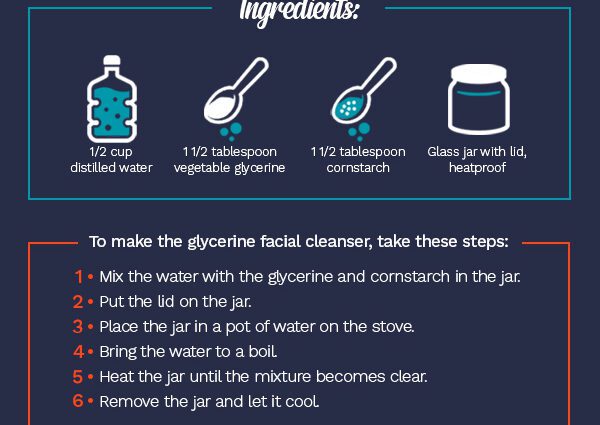Contents
Glycerol: how to use this moisturizer?
Glycerol has unparalleled moisturizing power, which places it at the forefront in cosmetology. But it has many other powers which explain its very wide use in other areas.
Cosmetology cannot do without glycerol
Glycerol is often used as a moisturizer, solvent and lubricant. A moisturizer has the property of fixing water, that is to say of hydrating. A solvent has the power to dissolve substances. A lubricant is used to reduce friction: here, the viscous consistency of glycerol smoothes the skin, lubricates it.
Glycerol has a moderate sweet taste (about 60% of that of sucrose) and is more soluble than sorbitol, which tastes less and sometimes replaces it.
It is used in toothpastes, mouthwashes, moisturizers, hair products, and soaps. It is also a component of glycerin soaps, in particular Marseille soaps.
Glycerin in summary has many properties:
- It gives smoothness to many products;
- It has a strong hydrating power thanks to its ability to retain several times its weight in water. Thus, it forms a barrier on the epidermis, limiting moisture loss while restoring the activity of lipids which play an essential role in skin repair;
- It has emollient properties. The term emollient in medicine means: which relaxes the tissues (from the Latin mollire, soften). Figuratively, softening, soft. That is to say, it smooths the skin and hair while maintaining a good level of hydration;
- Its occlusive function allows the skin to be protected from external aggressions such as wind and pollution;
- In practice, it is applied once or twice a day, in a thin layer.
Use in dermatology
The best proof of its moisturizing power is its use in dermatology to relieve or even cure chronic disabling lesions or accidental lesions.
- By the cutaneous route, in combination with paraffin and petroleum jelly, glycerol is used in the management of burns, atopic dermatitis, ichthyosis, psoriasis, skin dryness;
- By the cutaneous route, in combination with talc and zinc, glycerol is used in the management of irritative dermatitis and diaper rash, in particular in infants.
A moisturizing power is amazing
Glycerol or glycerin is therefore a colorless, odorless, viscous liquid with a sweet taste. Its molecule has 3 hydroxyl groups corresponding to 3 alcohol functions responsible for its solubility in water and its hygroscopic nature.
A hygroscopic substance is a substance which tends to retain moisture by absorption or adsorption. Moreover, glycerol is poorly stored and dilutes by absorbing moisture from the air.
The products that are found on the market contain either pure glycerol or mixtures based on glycerol. The combination of glycerol + petroleum jelly + paraffin is particularly interesting. A skin protective effect has also been demonstrated by ex vivo tests carried out on delipidated tissue implants, that is to say without lipids (without fat).
These tests showed a rapid restructuring of the lipid barrier with demonstration of the emollient activity of the Glycerol / Vaseline / Paraffin combination. These properties, demonstrated in pharmaco-clinical studies on validated models, promote the restoration of the water state and the barrier function of the skin, which is likely to reduce the phenomena of irritation, itching and scratching. Note: this combination should not be used on infected skin, nor as an occlusive dressing, that is to say a closed dressing.
How is glycerol made?
We find the word glycerol in triglycerides, often measured in the blood when we ask for a balance sheet even basal. Indeed, it is at the center of the composition of all lipids (fats) in the body. It is a source of energy: as soon as the body needs energy, it draws glycerol from fat stores and passes it into the blood.
There are three sources of manufacturing glycerol:
- Saponification: if soda is added to an oil or animal or vegetable fat, a soap and glycerol are obtained. Glycerol is therefore a by-product of soap making;
- The alcoholic fermentation of grape must during wine production;
- The transesterification of vegetable oils, which in short results in biodiesel (fuel). Again, glycerol is a by-product of this operation.
Can we eat it?
We have already seen that glycerol enters into the composition of many dermatological pharmaceutical products. But it is also found in drugs (sweetening power of syrups), suppositories, soaps, toothpastes. It is a pleasant replacement for sorbitol (because it tastes better). It has a laxative power if absorbed in sufficient quantities and is weakly diuretic.
And of course, it is present in food: it is the additive E422 which stabilizes, softens and thickens certain foods. If we add that we can make it at home and that it also has domestic uses, we are not far from making it a panacea.










